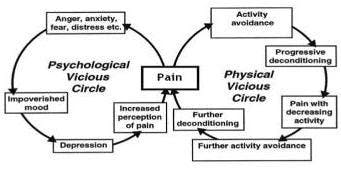Are you in constant or recurring pain that will not let you enjoy your life as you would like? Do you suffer from the effects of an old injury, a degenerative condition, or some other situation that calls for ongoing pain management? If so, then your first instinct might be to reach for medication — but hold that thought, because drugs can pose their own threats to your health. Physical therapy can provide safer, effective, non-addictive, long-lasting strategies to manage pain.

Drugs promise quick (if only temporary) relief from many kinds of pain. Unfortunately, they can harm as well as help. The most glaring example is the addictive potential of opioid drugs. Opioid dependence and abuse have become a national nightmare in the last decade. The CDC estimates the total economic burden of prescription opioid misuse alone in the US is $78.5 billion/year including the costs of healthcare, lost productivity, addiction treatment and criminal justice involvement. Some researchers even feel that many people who would otherwise be able to work are sidelined because they would fail a drug test. Roughly 21-29% of patients prescribed opioids for chronic pain misuse them. Between 8-12% develop an opioid use disorder. An estimated 4-6 % who misuse prescription opioids transition to heroin. As mind-blowing as these numbers are, to a person who uses prescription pain medication for pain relief, opioids may seem like the path of quick recovery. The misuse of opioids remains a problem in our society. The key is to seek help before pain gets out of control.
Even over-the-counter pain relievers can pose dangers to your health. Taking painkillers to rid yourself of pain may seem like a good solution, but it is not. Over-the-counter meds like aspirin, ibuprofen and acetaminophen can have side effects. Taking a lot of aspirin can cause your stomach to bleed and can also cause kidney damage. Acetaminophen can result in kidney damage. Ibuprofen can cause both kidney and stomach problems. Not only does taking meds for pain just mask the problem, it may cause you another one. Using medication for pain does not get to the root of the problem. None of these medications are meant to be used long term. Pain is not supposed to linger.
Pain is your body’s natural warning system — which makes it a particularly important and useful communication tool at early onset of injury. Nerve signals alert you to a problem that requires attention, from an infected area or traumatic injury to joint or overuse of a muscle or tendon. This is especially true of acute pain. Sensations of pain and stiffness discourage you from using an injured body part while it is healing; once the condition resolves, pain should go away.

When pain does not go away, it is important to investigate why. Sometimes pain will outlive its usefulness, lingering on for months or even years after your body has done all it can to address the underlying problem. We call this chronic pain. It afflicts some 116 million people in the U.S. alone, that is 1 in 10 people suffer from chronic pain. The pain may plague you constantly, or it may come and go in bouts that last for weeks at a time. We have a quick fix culture and physicians yield to meeting patient’s demands for passive prescriptive treatments. The solution is not to repeatedly mask pain with medication and put off the need to address why your body is trying to tell you something. Pain and suffering are the primary reason American’s are on disability. This vicious cycle is because the root causes of pain are left unaddressed. As the opioid epidemic has inflicted the US and healthcare professionals are seriously reevaluating its abuse, it is worth noting that PT has long been considered a safer, cheaper, and more effective treatment for chronic pain.
Physical therapy not only can help relieve pain; it addresses what is causing the pain in the first place. A physical therapist is a highly trained medical professional, and an expert in the biomechanics of movement. Through advanced diagnostic procedures, a physical therapist can uncover the source of your pain and find ways to address it for long-term health and mobility. Our healthcare mindset needs to shift. Physical Therapy should be a first line response to pain. A physician will outsource your needs, whereas a PT will help you take charge of your own care.
The focus of treatment should be to restore function disability not just treat pain symptoms alone. This would make the 1/3 US population much more productive and living a better life without paying the price of drugs. Physical Therapists are in a prime position to guide a person who is suffering from pain, disability and struggling with the social, psychological, and even economical stressors that accompany pain. Treatment addresses the physical and psychological challenges a patient is faced with when trying to get their life back. Clinicians address a patient’s individual concerns and apprehensions with weekly support and coaching, keeping a person on track with necessary lifestyle changes that will empower an individual to take control of pain while restoring physical function. Careful exposure to exercise and activity while keeping symptoms at a minimum permits a person to discover how physical activity can be a path and even the reward to relieve pain.

Stay tuned for additional information about the integrative science of pain. If you’ve ever experienced a disabling injury it would behoove you to know what is the difference between acute and chronic pain, learn about the psychological components of chronic pain, and discover how a person who has learned how to avoid physical activity because of pain, can take control over pain and return to a more productive life.
